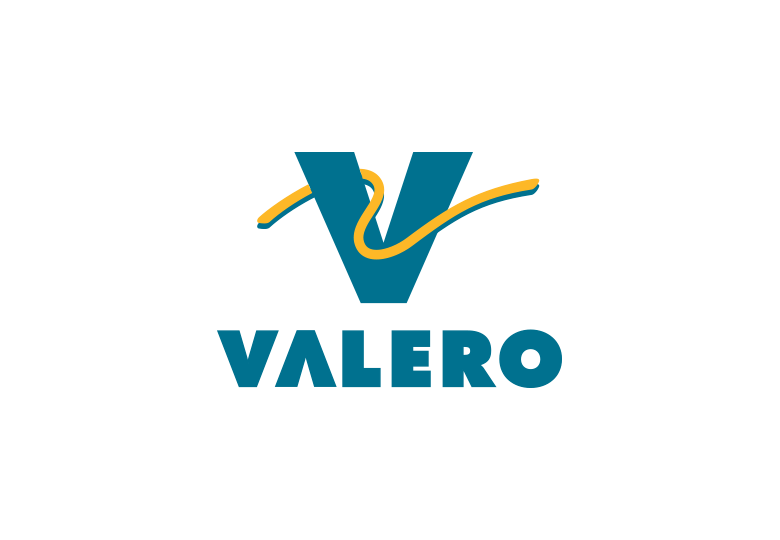FULL TRANSCRIPT:
CONSUELO MACK: This week on WealthTrack, legendary Financial Thought Leader Charles Ellis and award winning financial advisor Mark Cortazzo show us how to cut sky high investment fees to save money and grow our nest eggs over time. Controlling your investment costs is next on Consuelo Mack WealthTrack.
Hello and welcome to this edition of WealthTrack. I’m Consuelo Mack. How much do you pay in investment fees every year? What is the actual dollar amount you pay to your financial advisor, let alone the mutual funds you own and the firms that have custody of your investments? How much do they really take away from your portfolio and its performance over the years? According to a ground breaking article by legendary financial consultant and WealthTrack guest Charles Ellis, “investment management fees are much higher than you think.”
As Ellis points out the little over 1% of assets paid by most individuals and little less than one-half of 1% paid by institutional investors are “seen as so low that they are almost inconsequential” It turns out they are anything but! As Ellis points out “investors already own those assets so investment management fees should really be based on what investors are getting in the returns that managers produce.” Considered that way, fees are much higher. Pension giant CalPERS, the California Public Employees Retirement System, earned just one percent on its $233 billion dollar investment portfolio in the past fiscal year. If it were to pay the average half a percentage point charge on assets under management, the fee would equal 50% of their return for the entire year!
The financial toll investment fees take on portfolios over the years is stunning. Last year, financial advisor and WealthTrack guest Mark Cortazzo introduced a flat fee portfolio product for individuals with smaller and less complex portfolios than his usual high net worth clients. He compared the ten year costs for two clients, each with a $500,000 portfolio- one paying the not unusual annual fee of 1.5% of assets; to another, a flat fee client paying his $199 a month charge. With all other things being equal, the flat fee portfolio saved more than $80,000 in fees over the ten year period.
This week we are going to examine investment fees and how you can reduce them with Charles Ellis and Mark Cortazzo. Financial Thought Leader Charley Ellis is a world renowned investment consultant to governments, institutions and the financial industry. He has authored or co-authored some 18 books including the investment classic, Winning the Loser's Game, and more recently, with Princeton economist Burton Malkiel, The Elements of Investing . He is devoting a great deal of his time to helping individuals become better investors. Mark Cortazzo is founder and senior partner of MACRO Consulting Group, a 20 year old financial advisory firm catering to high net worth, and now Main Street, clients. Mark has been recognized as a top advisor by Barron’s, Worth, and Fortune magazines among others. I began the interview by asking Charley Ellis how much higher investment management fees are than we think.
CHARLES ELLIS: It depends on what you're thinking, but most people, honestly, most people think the fees are roughly one percent. That is low, compared to anything else. You buy and sell a house, one percent commission, you think, "My, God. That's really low." It just doesn't happen that way. And if you look at it that way, fees are low.
CONSUELO MACK: Right. And it's one percent, based on the assets under management, for instance. So you a $100,000 portfolio, it's a $1,000 fee. Ah, nothing.
CHARLES ELLIS: Right. The problem with that way of thinking is that it doesn't reflect any economic reality. For an example, if you're an investor, you already have the assets, so you're not getting the assets. You're getting something else. What are you getting? You're getting a return on the assets. Okay. So what's the fee on return? If you take the kind of return people are expecting from now, out over the next 10 or 15 years, you're paying about a 15% fee. That's not low. That's a pretty high fee. That's twice as much or more than most people, say, would pay for a house sale or transaction. It starts to look like a pretty good profit margin, even for a pharmaceutical company. That's a lot. But that's not the right way to look at it, and that's not the whole story. It's actually a great deal higher than that.
CONSUELO MACK: So Mark, you run an advisory firm and you have seen what a lot of your competitors are doing as well, and, basically, the one percent of assets under management, as a fee, that's the standard, right? Some are higher. So what's your response to Charley's critique that, in fact, fees are much higher than you think, when you just look at the returns you're getting?
MARK CORTAZZO: I agree, and I think that the one percent is even wrong. We've had a lot of people come to us to review the fees on their portfolios to compare to what we're doing, and they have a million-dollar account, and we ask them what's their fee, and they said it's one percent, because at a million dollars the fee goes to one percent. We looked at the fee schedule, and it was actually two percent for the first $250,000, 1.75 for the next 250, and one-and-a-half for the next $500,000. And when we did the math on a $1.1 million account, they thought they were paying one. They were paying 1.63%. So it's 60% higher than what they thought was one, which in and of itself might have been a very high cost for a $1.1 million account.
CONSUELO MACK: And is that common practice, do you think, in the industry?
MARK CORTAZZO: The most common fee structure that we see at big brokerage firms and investment advisories is a blended- not back to dollar one- it's a blended fee, you know, where we think that it's not obvious to the client what they're paying.
CHARLES ELLIS: One thing you should pay attention to is if you went to Canada, the fee normal would be something just over two percent, and if you go to all the major countries in Europe, it ranges between that two percent and one percent. And if you go to Japan, it can get even higher. So our fees are low relative to the world norm and behavior.
CONSUELO MACK: And that's a change, Charley. You have been in the financial business for 50-some-odd years. You started as a very young child. And essentially, it was not always this case. So how did we get here? I mean, how did we get to where one percent is the norm, and even that's not real?
CHARLES ELLIS: Well, for 50 years I've been working with investment management firms, and the basic metric has always been the same. You can increase your fees, and if you do increase your fees, nobody seems to mind, and you can increase your fees again, and nobody seems to mind. Because everybody says you would never comparison shop for price if you needed brain surgery. If your family was faced with a major lawsuit, you wouldn't concentrate on the price of a lawyer. You're looking for skill. And if you want to get great skill, you have to be prepared to pay up. And those who traditionally have had the lowest fees for active management have been not particularly skilled and not particularly well represented as to what their capabilities were. So we're looking for value. We look for-- best indication of value in most markets is price. So we are prepared to pay a price in order to get good value. After all, my family is dependent upon it. I'm dependent upon it. I want the best. And if you want the best, you pay up.
CONSUELO MACK: So where is the flaw in that argument now? Because you have said that, in fact, the market has changed now. And so buying the best- whatever the best is- the best has changed. So how has the market changed, in which case, that model doesn’t really work anymore?
CHARLES ELLIS: Well, the main change is there are so many truly wonderful, brilliant, hardworking, well-educated, slaving away at it people trying to beat the market that they're just too darn many of them for any one of them to be able to do better than the crowd. And if you believe, as I do, in the value of prediction markets, there's been no prediction market in the world with as many people putting real money into it, and really doing the research, and being free to make any choice they want to make, and working at it all the time. So they've got it pretty well right. Not perfect, but so much better than it ever has been before, that it's very hard for anyone to do better than the crowd. And it's even harder to figure out who's it going to be before it happens.
CONSUELO MACK: So you have a different approach at MACRO Consulting, the way you treat different asset classes.
MARK CORTAZZO: As an extension of what Charley was saying, trying to define who's going to be the best manager, you're starting to see a lot more model portfolios that are using indexes as their base to invest the portfolios. So my 60-40 mix of index-based funds isn't going to have a big fundamental difference in performance versus somebody else's 60-40 mix. We're buying the same indexes and the same asset classes. The average fee for a $500,000 account, national average, is one-and-a-half percent. We, as well as other discounted firms, are at about half a percent for that $500,000 account, and at a million, that one percent fee, there's plenty of firms that will manage an index portfolio for a quarter of a percent, and that's a big difference net in your pocket.
On the low return, one of the things that's very frustrating for us is, we see people coming to us with fees that are 1.5, 1.75 percent, and they have half their money in fixed income, and the ten-year treasuries at 1.5, 1.45, their fee is more than their yield, so, you know, to Charley's point, not 15%. It might be 100% of the earnings on half their portfolio is the fee. And so we've talked to clients about calling out part of the portfolio, put it in a money market. You know, money market, you can shop it around and get one percent net, FDIC insured, and then have the equity portion managed or, you know, an 805 equity portfolio managed, where you're reducing your fees, and you're reducing your risk.
CONSUELO MACK: So Charley, are some of the most influential institutional clients, probably at your behest, starting to question the fee structure? Is there any change occurring?
CHARLES ELLIS: Gently questioning would be about as far as most people take it.
CONSUELO MACK: And why is that?
CHARLES ELLIS: But there is a different way of answering your question, which takes us to the, well, what about active management versus passive management, which is a really important proposition. And if you look at the data, it's very clear that institutional investors and individual investors, but particularly institutional investors, have been increasing. The number who invest in passive has gone up, and up, and up…
CONSUELO MACK: Yes.
CHARLES ELLIS: …every year. The percentage of their assets individually that goes into passive, goes up and up every year. So two of the major forces are increasing steadily and never reversing. Now, the reason for that is partly fee and partly the imperfectability of active management. So that if you really want to get a reliable result, and you would like to save money in doing it, going to what bothers most of us as individuals quite a great deal, I don't want to settle for average in anything else, why should I settle for average in this? It turns out that is not average. That is comfortably above average.
This last year, for an example, 80% of actively managed funds underperformed the benchmark they were aiming for. You say, "Well, what happens over a long period of time?" It's pretty grim again. Roughly, 70% of funds have been underperforming over every decade, and make it 20 years to make it longer. The data is not so good. It goes up towards 80% underperform. That's a very powerful message, and people are getting it. And even though they'd like to have above-average children, and above-average automobile driving skills, and above-average dancing skills… we'd all like to have everything be above average. The fact of the matter is, if you can have an average flight on an airplane, you'd take it, because an average flight may be a yawner, but that's just what you want in flying an airplane. And in the same way, if you really want to concentrate on what's important in investing, you'll concentrate on what you're trying to retrieve, how much risk can you take, and what basic kinds of investing will do well, and then implement it through passive investing, either ETFs or index funds.
CONSUELO MACK: Mark, let me ask you about some other fees that we are not aware of. What are some of the most obvious that we should pay attention to?
MARK CORTAZZO: When we build Flat Fee Portfolios, we're trying to eliminate as many of the conflicts of interest as possible. And you look at many of the asset management programs that are out there. They're run by companies that are product manufacturers. So they also manage mutual funds. And so, you know, we've had examples where someone would come in, and they had 19 different mutual funds in their asset allocation model, and 16 of the 19 funds were a proprietary fund of the group that was doing the asset management. Now, there’s 26,000-plus mutual funds out there. They weren't the best in 16 of the 19 categories. So they're making additional soft dollar from the asset management fees. There are 12(b)(1) fees in additional costs that get passed on. And so the asset manager, if they're receiving any other sources of revenue from that program, their objectivity to pick the best funds is compromised because of revenue. And so, the internal costs are very, very important to us, and when we do an analysis, we actually run that report for our client, and say, "Here's all the funds. Here's your expense ratio. And here's what you're paying internally in fees a year, in addition to the advisory fee." And it's usually a very surprising number to most people.
CONSUELO MACK: So what are the other kinds of red flags or even yellow flags that go up, if you're an individual investor?
CHARLES ELLIS: Very large generality. The real problem for investment management was, 50 years ago, strictly a profession. It didn't pay particularly well, but it was interesting work, and you could take some real pride in what you were doing, and you accepted it. It just didn't happen to pay very well. Over the last 50 years, as fees have been increased, and the assets under management have gone up a great deal, and computerization has made it possible to manage substantially more money, the business pays very well. As a result, the focus on profession has gone down and the focus on business profitability has gone up. So you really ought to be watching is this firm in it for the business side or are they in it for the professional side.
And there are keys to the questions you can ask. What is the average length of employment of the people in your organization? How much do you invest in new people training and developing their skills and capabilities? How much of your time, Mr. Account Representative, do you spend every year in training programs? If you look at the senior people in your organization, how many of them are professional people, how many of them are business people? And by and large, organizations that are widely known and widely regarded for investment management tend to be pretty serious about the professional side.
CONSUELO MACK: How about naming some names? What companies would you say really have set a standard of professionalism that you would feel comfortable referring, an investment management firm or financial advisory firm, that you would feel comfortable referring friends to?
CHARLES ELLIS: I'll start with Mark's favorite and mine, Vanguard and DFA, two truly outstanding outfits. We can get into more detail in it, if you want to. T. Rowe Price, outstanding organization. Capital Group, which manages the American Funds- outstanding organization. I know, they've had in the last couple of years some imperfection in their results. Don't worry about it. They are a great organization, and they will figure out what the problems are, and get right back on track, and you can always trust them in the long run. Dodge and Cox is also quite a good firm.
MARK CORTAZZO: I agree with virtually all the names that you listed. We use many of them, you know, in our asset management for our high net worth clients as well as our flat-fee program. But every one of those organizations has areas where they're particularly strong. And working with an advisory group that's independent, that's not getting any money from any of them can help construct an all-star team, where you have each of those management teams do the position that they do best, and instead of having one fund family group managing every asset class within that portfolio, having them do their specialty I think can help…
CHARLES ELLIS: But Mark, that's what you would say, because your business is to help sort it out and figure it out. You could also say any one of those firms, as a family of different funds, has consistent integrities, consistent discipline, consistent professional commitment, and they're pretty darn good.
MARK CORTAZZO: Absolutely.
CHARLES ELLIS: So you could go either way.
CONSUELO MACK: Charley, you wanted to make another point. Because, you know, the active versus passive debate, and Mark, I'm going to find out in a minute where you come out on that, and we've had this discussion before, Charley, and I think it bears repeating, because you have had 50 years, basically, of analyzing professional managers, and to advise, you know, clients where they should put- big, big clients- where they should put their money, and it's been a battle for you as well as to, you know, you finally said go passive. So what did you want to say about that topic?
CHARLES ELLIS: Finally, the epiphany. You'd think after 40 years you would get it. I didn't. Forty-five years, somewhere in there I started to get it and realized. Part of it is by shifting from working with investment managers, to working with clients of investment managers, and watching what gets delivered, and you start paying a little bit more careful attention to it. Big stunning surprise for me was to find out mathematically that most managers underperform the benchmark they're aiming for. Just happens to be the reality. Mathematically, nobody has been able to figure out who is going to do better in the future. Just can't be done.
So okay, that's pretty tough. What's the third thing? The third thing is those who underperform, underperform by twice as much as those who outperform. So that doesn't sound like a good deal. Then I'm looking at the numbers. Meeting, after meeting, after meeting, and it finally comes on like a light bulb. That string of numbers that are called fees is pretty big compared to that string of numbers called your extra return. In fact, the fees are huge compared to the incremental or extra return. I believe what the managers ought to be doing is adding investment advice and counseling, because there the value is tremendous, getting in the right direction, getting the basic structure right. That's really valuable.
CONSUELO MACK: So Mark, active versus passive management, where do you come out in the debate?
MARK CORTAZZO: We also looked at the math. And if you think about this logically for a minute, all of the active managers put together are the market. So if you look at the collective performance of all active managers, their performance is the market. So the only differentiator is going to be their fees. So most index funds, the vast majority, almost 100% of them, underperform their benchmark, but it's by a very little amount, where the active managers, that divergence can be greater. And for people who don’t want surprises, and, you know, good or bad surprises, I think that buying passive, it's controlling some of the things you can control. Passive has much higher tax efficiency. You can control that. The fees you can control. You can control where you own, what you own.
So you're taking a market that feels like it's out of control, and at least empowering yourself with the ability to adjust the things that you have the ability to adjust. So we have an active model portfolio that we manage for clients that won't take our advice to go to a passive strategy in our flat-fee model, but we frequently have follow-up conversations with them to see if they've learned the lesson. So we think that for model-based portfolios over long periods of time, control the things you can control, and costs, obviously, is one of the big variables.
CONSUELO MACK: So the One Investment for long-term diversified portfolio, and, of course, an investment can be an action that you take, whatever. So what would it be? What's the one thing that we should do or the one thing we should invest in? Charley Ellis.
CHARLES ELLIS: Well, the best thing every single individual and probably every single institution can do is just sit down quietly and say, what do we really, really, really want to accomplish? What do we really, really want to avoid? And what is the most realistic way of getting where we want to go? That's probably the best thing anybody can do.
CONSUELO MACK: So very much back to basics.
CHARLES ELLIS: Find out who you are, what are you trying to accomplish, and from there, it's not all that difficult to get a pretty good answer, and to getting a brilliant answer to the wrong question would cause lots of harm.
CONSUELO MACK: In the context of our fee discussion, minimizing the fees, is there one action we should take to minimize our investment fees?
CHARLES ELLIS: Sure. Everybody, everybody who's an individual investor should be actively seeking passive management. They can do it with ETFs. They can do it with index funds. And the best known, most widely capable index fund managers are the ones to go with.
CONSUELO MACK: Mark, same questions to you. One Investment, one action we should take for a long-term diversified portfolio.
MARK CORTAZZO: I'm going to go with controlling the things that you can control. And I'll give you three quick examples. Things like money markets. The average money market is paying four-one-hundredths of a percent. You can shop that around and get FDIC-insured money markets paying over one percent right now. So that's 25 times the yield. On your safe money, control the thing you can control. Making sure you're looking at where you own, what you own. So tax-inefficient investments, make sure you own those in the tax-deferred accounts; tax-efficient investments, make sure you own them outside in your taxable accounts.
And the third and most important thing is making sure that you understand what you're paying in fees, in dollars, as a percentage and relative to your portfolio size. And are you getting a good value for that? You know, it is something that people spend a few minutes to try to save a few percentage on their auto insurance. That's hundreds of dollars. By taking the time to look at that and having it reviewed by someone, it could be tens-of-thousands of dollars, and maybe even a six-figure difference, even on a more moderate size portfolio over time, because it's the effect of that compounding that's being sliced off with those higher fees.
CONSUELO MACK: Mark Cortazzo, it's so lovely to have you here from MACRO Consulting, and Charley Ellis, from numerous organizations, you know, author or co-author of 18 books, a new one on the way. Just great to have you on WealthTrack, always.
CHARLES ELLIS: It's a pleasure to be with you.
CONSUELO MACK: At the conclusion of every WealthTrack, we try to leave you with one suggestion to help you build and protect your wealth over the long term. This week’s Action Point is the essence of what Charley Ellis and Mark Cortazzo just discussed. It is: know what your investment fees are and take steps to minimize them.
Ask your financial advisor for an itemized list of the dollar amounts you are paying for all of their services, and the fees on each of your investments so you will know exactly what you are paying every year. If they won’t do it, start looking for another advisor. If you manage your own portfolio, analyze the costs yourself or pay another investment professional to do it for you. It can save you a ton of money in the long run. If you have a 401k, you are in luck. All 401k statements are now required to show the actual dollar amounts you are paying in fees.
Speaking of saving a great deal of money, during next week’s fund drive for public television we are re-running our must-see interview with social security guru Mary Beth Franklin on how to maximize your social security benefits. If you would like to watch this program again, please go to our website, wealthtrack.com. It will be available as streaming video or a podcast no later than Sunday night. And that concludes this edition of WealthTrack. Thank you for watching. Have a great weekend and make the week ahead a profitable and a productive one.












